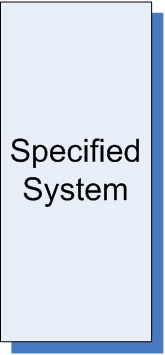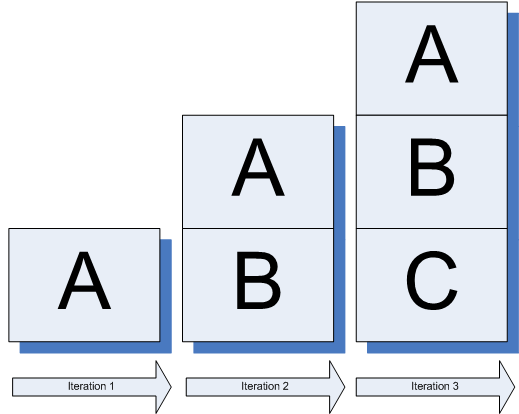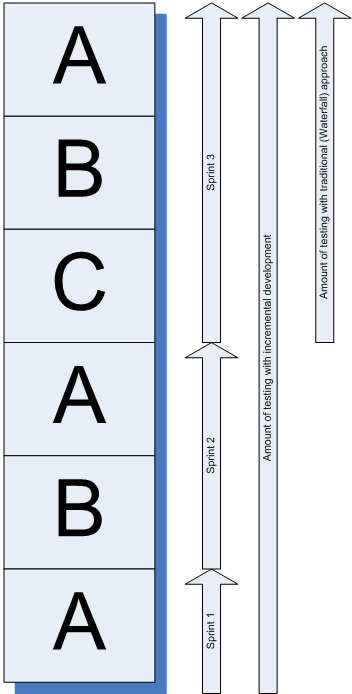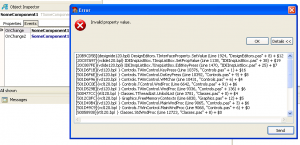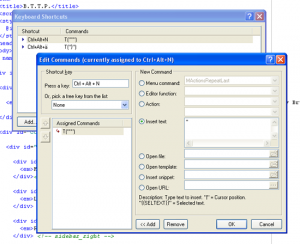The Swamp of Regression Testing
Why? Because otherwise you’re bound to get bogged down by the swamp of regression testing.
Regression Testing in Incremental Development
Suppose we’re building a system using a traditional method; We design it, build it and then test it – in that order. For the sake of simplicity assume that the effort of acceptance testing the system is illustrated by the box below.
Now, suppose we’re creating the same system using an agile approach; Instead of building it all in one chunk we develop the system incrementally, for instance in three iterations.
Potential Releasability
Now, since we’re “agile”, acceptance testing the new functionality after each iteration is not enough. To ensure “potential releasability” for our system increments, we also need to check all previously added functionality so that we didn’t accidentally break anything we’ve already built. Test people call this regression testing.
Can you spot the problem? Incremental development requires more testing. A lot more testing. For our three iteration big example, twice as much testing.
Unfortunately, it’s even worse than that. The amount of acceptance testing increases exponentially with the number of increments. Five iterations requires three times the amount of testing, nine requires five times, and so on.
This is the reason many agile teams lose velocity as they go, either by yielding to an increasing burden of test (if they do what they should) or by spending an increasing amount of time fixing bugs that cost more to fix since they’re discovered late. (Which is the symptom of an inadequately tested system.)
A Negative Force
Of course, this heavily simplified model of acceptance testing is full of flaws. For example:
- The nature of acceptance testing in a Waterfall method is very different from the acceptance testing in agile. (One might say though that the Waterfall hides behind a false assumption (that all will go well) which looks good in plans but becomes ugly in reality).
- One can’t compare initial acceptance testing of newly implemented features, with regression testing of the same features. The former is real testing, while the second is more like checking. (By the way, read this interesting discussion on the difference of testing and checking: Which end of the horse.)
Still, I think it’s safe to say that there is a force working against us, a force that gets greater with time. The burden of regression testing challenges any team doing incremental development.
So, should we drop the whole agile thing and run for the nearest waterfall? Of course not! We still want to build the right system. And finding that out last is not an option.
OK, but can’t we just skip the regression testing? In practice, this is what many teams do. But it’s not a good idea. Because around The Swamp of Regression Testing lies The Forest of Poor Quality. We don’t want to go there. It’s an unpleasant and unpredictable place to be.
We really need to face the swamp. Otherwise, how can we be potentially releasable?
The only real solution is to automate testing. And I’m not talking about unit testing here. Unit testing is great but has a different purpose: Unit-testing verifies that the code does what you designed it to do. Acceptance testing on the other hand verifies that our code does what the customer (or product owner, please use your favorite word for the one that pays for the stuff you build) asked for. That’s what we need to test to achieve potential releasability.
So, get out there and find a way to automate your acceptance testing. Because if you don’t, you can’t be agile.
Cheers!
